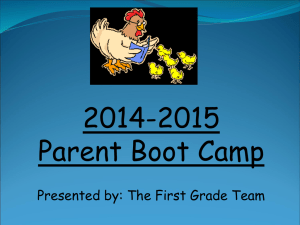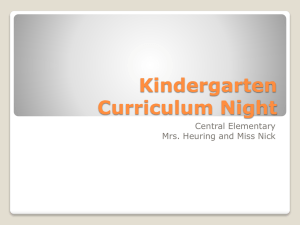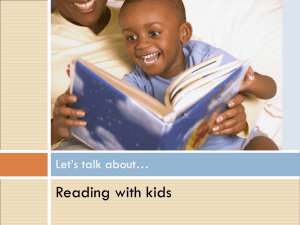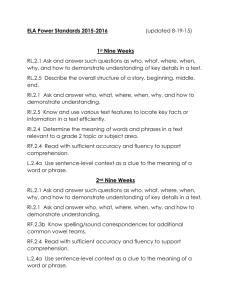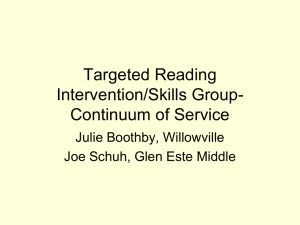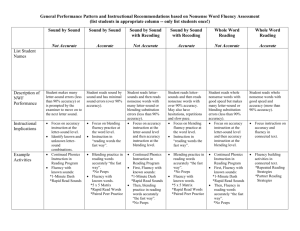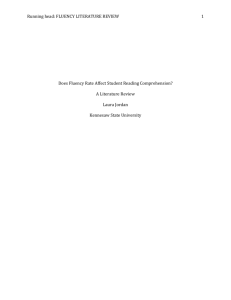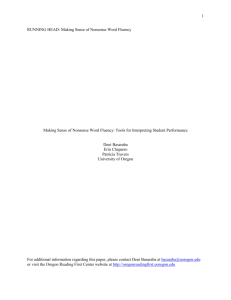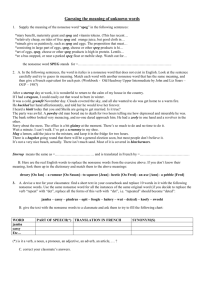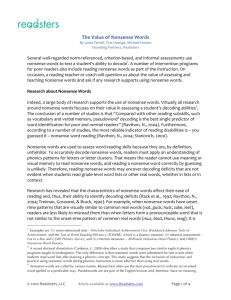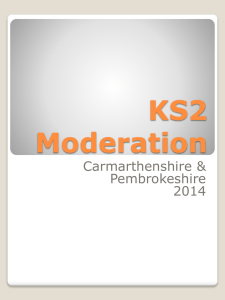File
advertisement
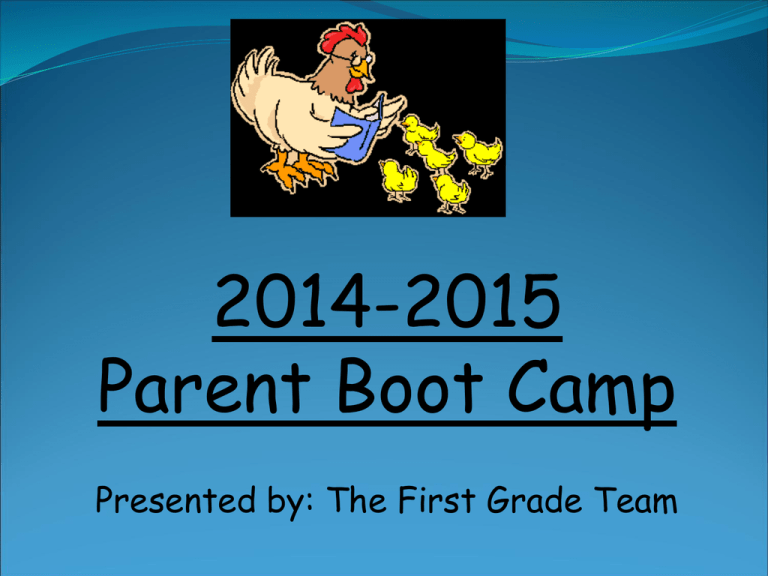
2014-2015 Parent Boot Camp Presented by: The First Grade Team First Grade Curriculum 1.RL.1 Ask and answer questions about key details in a text. 1.RL.2 Retell stories, including key details, and demonstrate understanding of their central message or lesson. 1.RL.3 Describe characters, settings, and major events in a story, using key details. 1.RL.7 Use illustrations and details in a story to describe its characters, setting, or events. 1.RL.10 With prompting and support, read prose and poetry of appropriate complexity for grade 1. 1.RI.1.1 Ask and answer questions about key details in a text. 1.RI.1.4 Ask and answer questions to help determine or clarify the meaning of words and phrases in a text. 1.RI.1.7 Use the illustrations and details in a text to describe its key ideas. 1.RI.1.8 Identify the reasons an author gives to support points in a text. 1.RI.1.9 Identify basic similarities in and differences between two texts on the same topic (e.g., in illustrations, descriptions, or procedures). 1.RI.1.10 With prompting and support, read informational texts appropriately complex for grade 1. REMEMBER: Students will need to be able to answer comprehension questions both orally and in written form. Read 3D Tests Read 3D Consists of Several Tests LNF = Letter Naming Fluency PSF = Phoneme Segmentation Fluency NWF = Nonsense Word Fluency WR = Word Recognition DORF = Dibels Oral Reading Fluency TRC = Text Reading and Comprehension Read 3D Helps Teachers… • Find students present levels • Create lessons to meet individual student needs • Create guided reading groups for their classroom and the CARE room • Make effective decisions to meet learning objectives • Monitor student progress LNF = Letter Naming Fluency Beginning of Year Benchmark Grade 1 Your child is given 1 minute to identify as many letters as they can. When the minute is over the teach says stop. PSF = Phoneme Segmentation Fluency PSF measures the ability to break apart words into individual phonemes. Use your arm and tap it out! b o t The word “bought” comprises three phonemes. NWF = Nonsense Word Fluency Beginning of Year Benchmark Grade 1 Your child is given 1 minute to read as many nonsense words as they can. If they can’t read the whole word then they say each of the letter sounds. By the end of the year they should be able to read the whole word. DORF = Dibels Oral Reading Fluency Beginning of Year Benchmark Grade 2 Passage One The teacher gives them a passage and they have one minute to read as much as possible. After one minute is up they retell as much as they can remember from what they read. TRC Written Comprehension Questions are for TRC Level F and Higher Tap Written Comp to access the rubric. How Can You Help At Home? Please see the reading packet that will go home on Monday in your child’s white folder! Decoding Detectives and Comprehension Critters These would make great bookmarks for home! We use them everyday in our reading groups! Reading Comprehension Bookmarks These bookmarks will be useful when reading at home. After reading with your child, write down one of these questions, and have then answer the question in written form. Once they are finished go back over their answer with them. Make sure they use punctuation, capitalization, complete sentences, and details in their answers. They must answer comprehension questions for Levels F and higher. How Can You Help At Home? •Short Vowel and Long Vowel Posters •We have already studied short vowels in our phonics lessons and you have probably seen several of your students spelling words coming from these lessons. We are beginning to work on long vowels now. When reading with your child refer to this sheet to help them with sounding out words. When writing at home use this sheet to encourage them to spell their words correctly. •Consonant Clusters and Digraphs Poster •We have been studying these in the CARE room as well as in the classroom. These pictures and words give the students an example of how to sound out certain words. How Can You Help At Home? Three Different Word Lists (Read 3D, 3-5 Word List, and Suggested Writing Words for First and Second Grade) Students need to be able to recognize these words when reading and spell these words when writing. Some of these words will look familiar because these words will also be their spelling words. Once they master a list then they move on to the next list. Nonsense Word Fluency Monthly Practice Students need to be practicing these nonsense words. The children may know these as “Make-Believe Words or Silly Words.” Practicing these nonsense words will help the students master the sounds each letter makes. Please remember when your child is sounding these words out they are ALL short vowel patterns. When the students are assessed they are given one minute for this assessment. The goal is to say as many nonsense words before the time is up. At the beginning of the year, most first graders will say the sound for each letter, but we are working towards saying the whole word by the end of the year. Keep practicing this at home! Text Features This is the Text Features Chart we use in the classroom and in the CARE room. Text Features help the students understand the information in the books and how to use/find certain items in their books. Questions?
